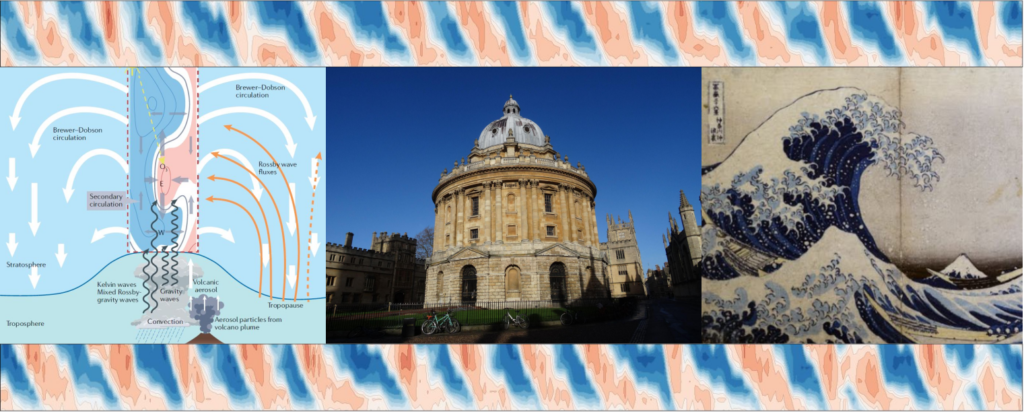The EGU General Assembly 2023 brings together geoscientists from all over the world to one meeting covering all disciplines of the Earth, planetary, and space sciences. The EGU aims to provide a forum where scientists, especially early career researchers, can present their work and discuss their ideas with experts in all fields of geoscience.
Abstract submission is open until 10 January 2023.
The following is a non-exhaustive list of sessions with relevance to SPARC:
AS1.1 Numerical weather prediction, data assimilation and ensemble forecasting Convener: Haraldur Ólafsson | Co-conveners: Jian-Wen Bao, Lisa Degenhardt
AS1.3 Subseasonal-to-Seasonal Prediction, Processes and Impacts Convener: A.G. Muñoz | Co-conveners: Daniela Domeisen, Joanne Robbins, Frederic Vitart, Christopher White
CL4.3 Predictions of climate from seasonal to (multi)decadal timescales (S2D) and their applications Co-organized by AS1/NH11/NP5/OS4 Convener: Leon Hermanson | Co-conveners: Panos J. Athanasiadis, Bianca Mezzina, Leonard Borchert, André Düsterhus
AS1.6 Coupled modelling and data assimilation of dynamics and chemistry of the atmosphere | PICO Co-sponsored by WMO and CAMS Convener: Alexander Baklanov | Co-conveners: Johannes Flemming, Georg Grell, Lu Ren
AS1.7 Atmospheric Convection Convener: Cathy Hohenegger | Co-conveners: Leo Donner, Adrian Tompkins, Holger Tost
AS1.8 Advancing understanding of the coupling between clouds, convection and circulation Convener: Raphaela Vogel | Co-conveners: Claudia Acquistapace, Leif Denby, Ann Kristin Naumann, Isabel L. McCoy
AS1.17 Atmospheric Rossby waves and Jet Dynamics, and their Impacts on Extreme Weather and Climate Events Convener: Marie Drouard | Co-conveners: Volkmar Wirth, Kai Kornhuber, Rachel White
AS1.19 Internal gravity waves | PICO Convener: Claudia Stephan | Co-conveners: Ulrich Achatz, Chantal Staquet, Katherine Grayson
AS1.24 Monsoon systems in the past and present and under future climate change Co-organized by CL1.2Convener: Andrew Turner | Co-conveners: Roberta DAgostino, Kyung-Ja Ha, Jianping Li
AS1.29 Stratospheric dynamics Convener: Thomas Reichler | Co-conveners: Bo Christiansen, Seok-Woo Son, Blanca Ayarzagüena, Zheng Wu
AS1.30 Dynamics and chemistry of the upper troposphere and lower stratosphere (UTLS) Convener: Aurélien Podglajen | Co-conveners: Marta Abalos, Felix Ploeger, Tanja Schuck, Ren Smith
AS1.31 The role of the middle atmosphere in a changing climate: circulation, composition and radiative feedbacks Convener: Peer Johannes Nowack | Co-conveners: Birgit Hassler, Gabriel Chiodo, Mohamadou Diallo, James Keeble
AS1.32 Structural changes in the middle and upper atmosphere Convener: Juan Antonio Añel | Co-conveners: M. G. Mlynczak, Viktoria Sofieva, Petr Šácha, Laura de la Torre
NP1.2 Extremes in geophysical sciences: drivers, predictability and impacts Co-organized by AS1/CL3.1 Convener: Gabriele Messori | Co-conveners: Davide Faranda, Carmen Alvarez-Castro, Emma Allwright, Meriem Krouma
AS3.5 Composition-Climate Interactions Convener: William Collins | Co-conveners: Paul Griffiths, Fiona O’Connor, James Keeble, Christopher Smith
AS3.6 Polar Ozone and Polar Stratospheric Clouds Convener: Farahnaz Khosrawi | Co-conveners: Ines Tritscher, Michael Pitts, Hideaki Nakajima
AS3.13 Understanding volcano-climate impacts and the stratospheric aerosol layer Convener: Davide Zanchettin | Co-conveners: Myriam Khodri, Graham Mann, Lauren Marshall, Shih-Wei Fang
AS3.17 Atmospheric composition variability and trends | PICO Convener: Oksana Tarasova | Co-conveners: Andrea Pozzer, Bin Qu, Euan Nisbet, Pedro Jimenez-Guerrero
AS3.18 Trends and impacts of tropospheric ozone | PICO Convener: Helen Worden | Co-conveners: Martin Schultz, Owen Cooper
GMPV8.5 Volcanic plumes: insights into volcanic emissions and their impacts on the environment, atmosphere and climate Co-organized by AS4 /CL1/NH2Convener: Pasquale Sellitto | Co-conveners: Giuseppe G. Salerno, Corinna Kloss, Tjarda Roberts
ITS1.14/CL5.8 Machine Learning for Climate Science Co-organized by AS5/ESSI1/NP4 Convener: Duncan Watson-Parris | Co-conveners: Katarzyna (Kasia) Tokarska, Marlene Kretschmer, Sebastian Sippel, Gustau Camps-Valls
NP5.4 Coupled Data Assimilation, Observations, and Uncertainties in the Earth System Co-organized by AS5/BG9/CL5/CR2/G3/HS13/OS4 Convener: Lars Nerger | Co-conveners: Harrie-Jan Hendricks Franssen, Anna Teruzzi, Patricia de Rosnay, Zofia Stanley
GI1.3 Monitoring networks Co-organized by AS5/CL5/ESSI4 Convener: Jeffery Riggs| Co-convener: Misha Krassovski
CL2.6 Attributing observed changes and events in natural, managed, and human systems to climate change Convener: Sabine UndorfECS | Co-conveners: Veronika Huber, Matthias Mengel, Lukas Gudmundsson, Sihan Li
CL3.1.2 Detection and attribution of climate change: From trends to extreme events and impacts Convener: Sebastian Sippel | Co-conveners: Aglaé Jézéquel, Aurélien Ribes, Pardeep Pall, Nikolaos Christidis
NH11.1 Prediction of natural hazards and climate extremes on seasonal to decadal timescales Convener: Julia Lockwood | Co-conveners: Mihaela Caian, Gillian Kay
NH11.2 Future changes in weather and climate hazards around the world Convener: Dann Mitchell | Co-conveners: Vikki Thompson, Ning Lin, Sonia Seneviratne

